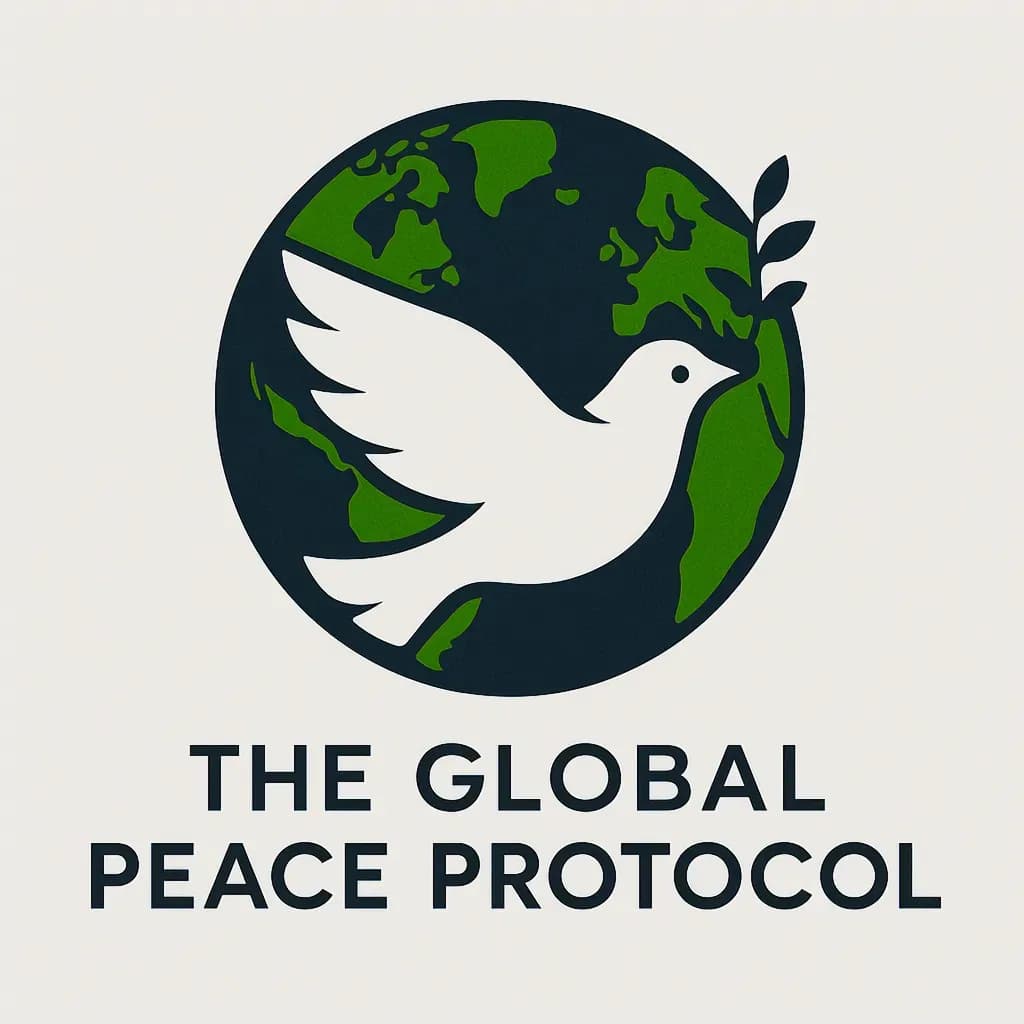The global security landscape is being reshaped not by diplomatic breakthroughs, but by the relentless advance of aggression and terror. From the all-out invasion of Ukraine to the targeting of civilians by terrorist networks, the world is witnessing a pattern of violence that exposes the fragility of international order and the urgency for change. Existing laws and moral outrage alone have proven insufficient. To prevent tomorrow’s tragedies, we need a comprehensive, actionable, and united strategy. There must be the Global Peace Protocol (GPP).
Act together. Protect peace. Preserve humanity.

A Blueprint for Collective Action
The Global Peace Protocol is a call to rewire our international immune system. Its core principle is as stark as it is overdue: aggression and terrorism anywhere are threats everywhere, and the global response must be decisive, unified, and overwhelming. No perpetrator should expect indifference; no crime should go unanswered.
The GPP isn’t just aimed at governments or diplomats. It’s an all-hands-on-deck approach, mobilizing every sector: public, private, and civil society to establish a true zero-tolerance stance on invasion and terror.
The Global Peace Protocol is a unified international framework designed to deter invasion-based conflicts and uphold global human rights standards through collective and decisive isolation measures.
The Four Pillars of a Durable Peace
A world immune to aggression doesn’t emerge by accident. The GPP is rooted in four foundational principles:
- Territorial Integrity: The line is bright — no borders can be changed by force. The GPP categorically rejects the recognition of territory seized by aggression, drawing on the legacy of the Stimson Doctrine (1932) and the Welles Declaration (1940). There is no normalization of conquest.
- Human Rights Protection: Civilians are not collateral. The GPP insists on the inviolability of every individual’s fundamental rights — no compromise, no exceptions.
- Collective Action: The only deterrent to future aggression is a predictable, unified global response. This means coordinated legal, diplomatic, economic, and societal measures triggered at the first sign of violation.
- Transparency and Information Flow: Silence is complicity. The GPP mandates open, accurate information flows to isolated populations, countering propaganda and empowering truth.
Nowhere are these principles more vital than in Ukraine. Here, peace cannot mean conceding territory or accepting fait accompli aggression. To do so rewards criminality and encourages further violence — a lesson history repeats with each appeasement.
The GPP Strategy: Three Engines of Enforcement
Turning ideals into action demands teeth. The GPP’s strategy draws strength from three interconnected engines:
1. Enforcement of International Law
- Strengthen international courts: Expand the reach and mandate of the International Criminal Court (ICC). Create special tribunals when needed, as for Ukraine.
- Bypass paralysis: Use mechanisms like the UN General Assembly’s “Uniting for Peace” resolution when Security Council vetoes stall action.
- Universal jurisdiction: Allow for prosecution and asset seizure of war criminals and terror financiers anywhere in the world.
2. Civil Accountability and Ethical Responsibility
- Personal accountability: War is not an anonymous act. Leaders, oligarchs, and enablers must face real consequences. Freezing assets is just the start.
- Corporate ethics: The era of business as usual with aggressor regimes is over. Companies risk global reputational ruin — and legal sanction — if they abet violence. The global exodus from Russia in 2022 set a precedent.
- Empowered citizenship: Vigilant citizens scrutinize their governments and demand real action, not empty words.
3. Soft-Power Mechanisms (“Peaceful Force”)
- Economic isolation: Go beyond token sanctions. Comprehensive embargoes and exclusion from international finance (e.g., SWIFT) can cripple aggressors.
- Information warfare: Support independent journalism, counter disinformation, and pressure tech platforms to shut down propaganda outlets. 2022 saw tech giants finally clamp down on Russian state media — this must become standard practice.
- Cultural pressure: Sports and cultural bans sap the legitimacy of aggressors and boost the morale of victims.
A Roadmap for Governments, Corporates, and Citizens
The GPP’s vision is actionable. Here’s how each pillar of society contributes:
Governments
Deploy sanctions and diplomatic isolation — immediately, not as a last resort. Support defenders with humanitarian and, where appropriate, military aid. Reinforce international law through support for the ICC and new tribunals. Neutrality in the face of mass atrocity is complicity.
Corporations
Embrace zero tolerance in practice: divest, exit aggressor markets, strengthen compliance, and ensure supply chains aren’t funding terror. Use corporate influence to advocate for truth and counter disinformation.
Citizens
Stay informed, challenge propaganda, boycott complicit companies, and demand accountability from leaders. Protest, advocate, educate, and build community resilience. Every act of solidarity — from online advocacy to welcoming refugees — weakens the aggressor’s grip.
Toward a New Era of Global Deterrence
The Global Peace Protocol isn’t about abstract virtue — it’s about shifting the calculus of power. It signals, unmistakably, that aggression will encounter a global firewall: legal, economic, societal, and cultural. An attack on one is an attack on all — not just in the language of treaties, but in the daily actions of governments, companies, and citizens.
By implementing the GPP, the world can transform outrage into action, silence into solidarity, and passivity into prevention. It’s not only a roadmap — it’s a warning. Those who would threaten the peace must know, in advance, that they will face the unified will of humanity.
Act together. Protect peace. Preserve humanity.
Learn more and join the initiative at globalpeaceprotocol.org/en.
This article originally appeared on my Medium. You can also read all of my articles here on my web.